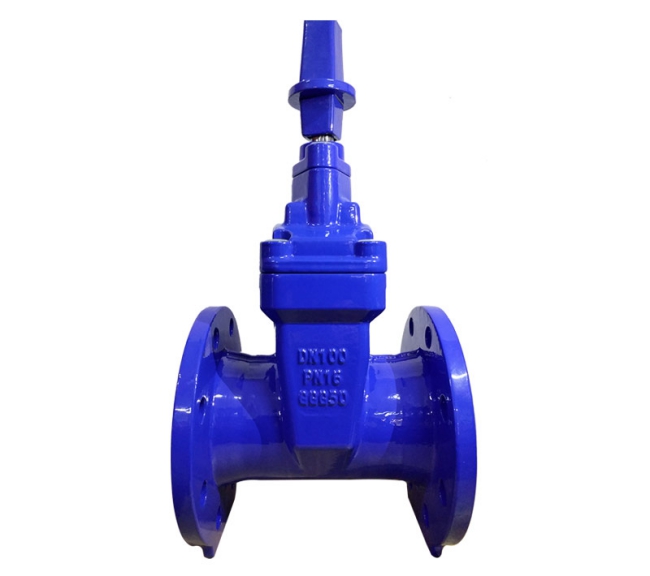2. Different structure
The gate valve has a more complicated structure and a larger height than the stop valve. From the appearance, the gate valve is shorter and taller than the stop valve. In particular, the rising stem gate valve requires a higher height space. This should be paid attention to when the installation space is limited.
3. Different flow resistance
When the gate valve is fully open, the entire flow path is straight. At this time, the pressure loss of the medium is the smallest. Compared with the stop valve, its main advantage is that the fluid flow resistance is small. The flow resistance coefficient of the ordinary gate valve is about 0.08~0.12, while the ordinary The resistance coefficient of the globe valve is about 3.5~4.5. The opening and closing force are small. Gate valves are usually suitable for working conditions that do not need to be opened and closed frequently, and keep the gates fully open or fully closed and are not suitable for adjustment or throttling.
The flow resistance of the shut-off valve during the entire stroke is large, the unbalanced force is large, and the required driving force or torque is correspondingly much larger. But it is very suitable for fluid adjustment and throttling. For high-speed flowing medium, the gate plate can cause the valve to vibrate when it is partially opened, and the vibration may damage the sealing surface of the gate plate and the valve seat, and throttling will cause the gate plate to be eroded by the medium.

4. Itinerary is different
The stroke of the gate valve is larger than that of the stop valve.
5. Different flow directions
When the stop valve is installed, the medium can enter from below the valve core and enter from above in two ways. The advantage of the medium entering from below the valve core is that the packing is not under pressure when the valve is closed, which can prolong the service life of the packing and can replace the packing when the pipe in front of the valve is under pressure. The disadvantage of the medium entering from the bottom of the valve core is that the driving torque of the valve is relatively large, about 1.05~1.08 times that of the above entering. The axial force on the valve stem is large, and the valve stem is easy to bend. For this reason, the way that the medium enters from below is generally only suitable for small-diameter cut-off valves (below DN50). For cut-off valves above DN200, the way that the medium flows in from above is selected.
The electric shut-off valve generally adopts the way that the medium enters from above. The disadvantage of the way the medium enters from above is just the opposite of the way the medium enters from below. The flow direction of the gate valve is the same when entering from both sides.
Compared with gate valves, the shut-off valve has the advantages of simple structure, good sealing performance, and convenient manufacturing and maintenance; the disadvantage is that the liquid resistance is large, and the opening and closing force is large.
6. Different maintenance procedures
Gate valve repair, not suitable for field pipeline, and most of the globe valve seat and disc, can be replaced online, without the entire valve, from the line, this is suitable for the valve and pipeline welding together. Of course, the difference between the gate valve and the globe valve is more than these. In the selection and use, we must distinguish their similarities and differences in order to avoid mistakes.
The application range of globe valves and gate valves is determined according to their characteristics. In smaller passages, when better shut-off and tightness are required, stop valves are often used; in steam pipes and large-diameter water supply pipes, gate valves are generally required because of lower fluid resistance.
The above information is provided by gate valve manufacturers.
Previous: Is the Railway Switch Made of Many Accessories?
Next: RTJ Flange
Copyright:@2020-2021
Comments Please sign in or sign up to post.
0
0 of 500 characters used